Vintage is apparently the go-to theme across the entire watch spectrum these days. French brand Yema Watches is no different. Although looking at their current all-retro lineup it appears less as if they’re capitalizing on a trend and more as if they haven’t updated their designs in 50 years.
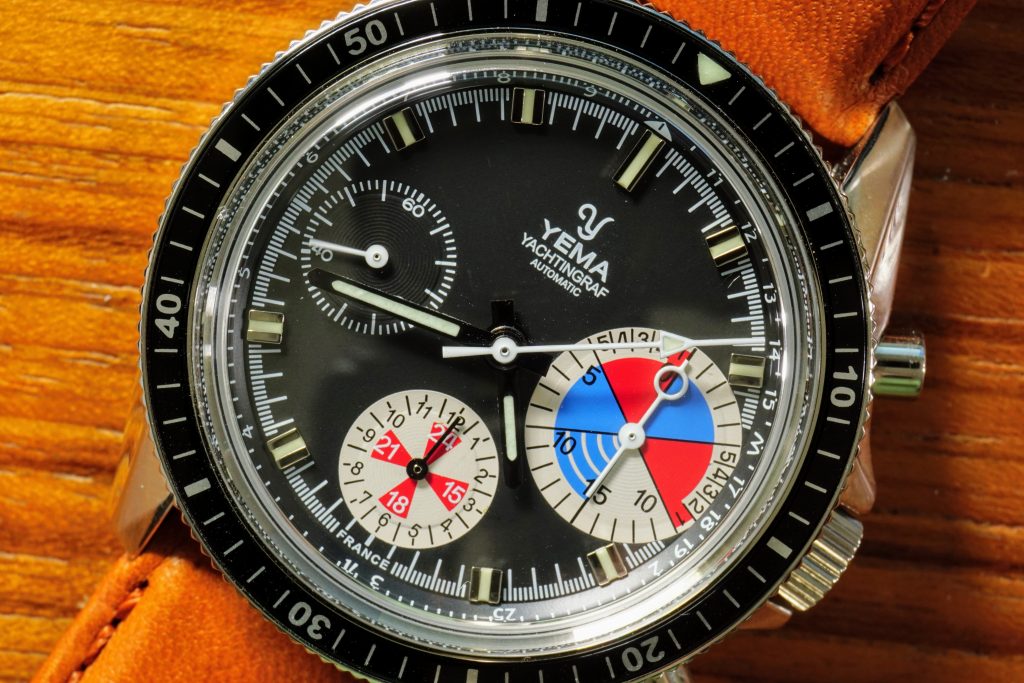
Founded in 1948, French watchmaker Henry Louis Belmont built Yema over the next several decades by focusing on the action sports of the day, namely diving, yachting, and racing. The Yema Superman dive watch, launched in 1963, was water resistant to 300 meters and subsequently issued to pilots in the French Air Force. Although, I’m not sure it was a ringing endorsement of French airplanes to issue dive watches to pilots. Nevertheless, Yema went on to produce the first French watch that made it to space and a watch that accompanied adventurer Jean-Louis Etienne on his solo journey to the North Pole.
Over the past 70 years, ownership of Yema shifted hands several times, including being owned by Seiko from 1988 through 2004. The company was eventually acquired by its current parents, Montres Ambre, a French watchmaking and jewelry company.
Yema’s current lineup is decidedly retro, and their Superman model is getting rave reviews from watch sites and collectors alike. But I’m over divers and their Yachtingraf model caught my eye several months ago. The colors drew me to the piece like a kid to rainbow ice cream, especially the ways they incorporated red, white, and blue into the chronograph subdials. It’s a shockingly colorful watch without being cartoony, and the colors do add some actual utility (which would help me justify the purchase to the wife, right..?). I don’t sail nor do I own a yacht, but I did watch the last America’s Cup, so that should qualify me for this purchase, right?
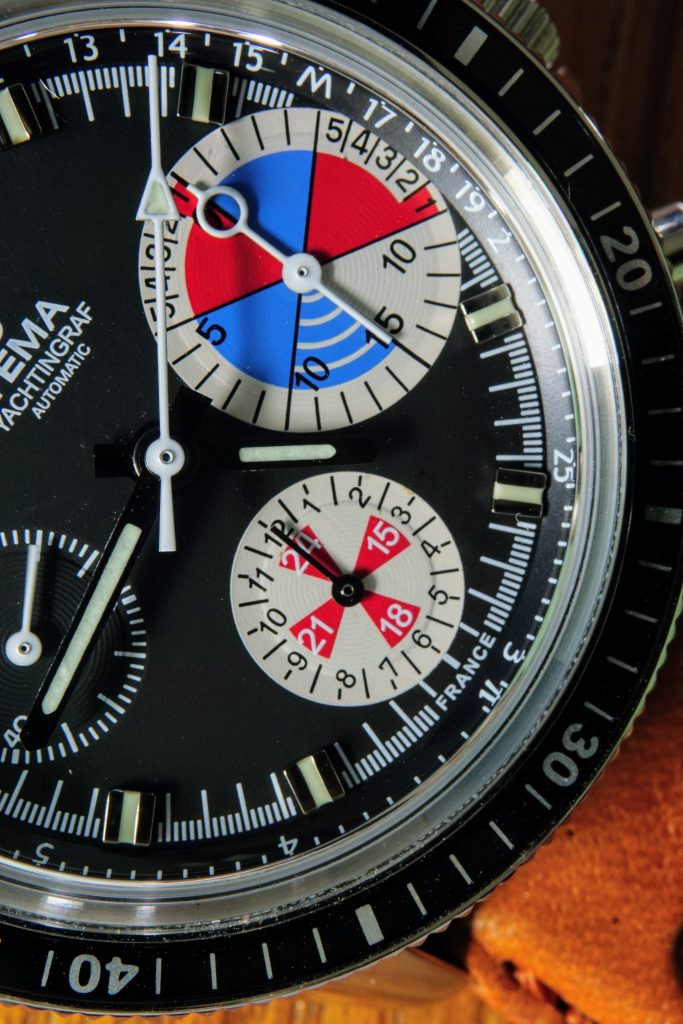
The Yema Yachtingraf line features quartz models starting at $279 and tops out with a limited edition automatic that can be pre-ordered for nearly ten-times that amount. I opted for the still-relatively-expensive Yachtingraf Heritage automatic (approx. $2,250 USD) with the sapphire crystal.
A pre-holiday deal offered 15% off (over the standard 10% off) and an extra leather strap (also a standard offer), while my annoying chats over several days with their friendly sales team prodded them to throw in a free hat too. Probably just to get me to leave them alone.
So what’s the verdict? Let’s sail in. 🙂
First Impressions:
I’ll have to admit, as soon as I zipped open the faux leather case, I was disappointed. With nearly every watch I’ve lusted over on my giant computer screen many just fall flat when I see them in person. I had the same experience seeing Farer’s chronographs in person for the first time. Mostly it’s the way they seem so much smaller in real life once I strap them to my 7.9” wrist, but it’s also the case proportions, and the Yema’s seemed off, especially the height of the case.
Second was the dial. On first look (and actual size), it was really, really busy. And the details were tiny. Every marking and sub-second indicator was crisp and sharp, but there were a ton of them, especially around the perimeter of the dial.
As usual, it took me a day or two of wear to warm up to the Yema Yachtingraf. Once on the wrist, my first impressions softened a bit. But just a bit.
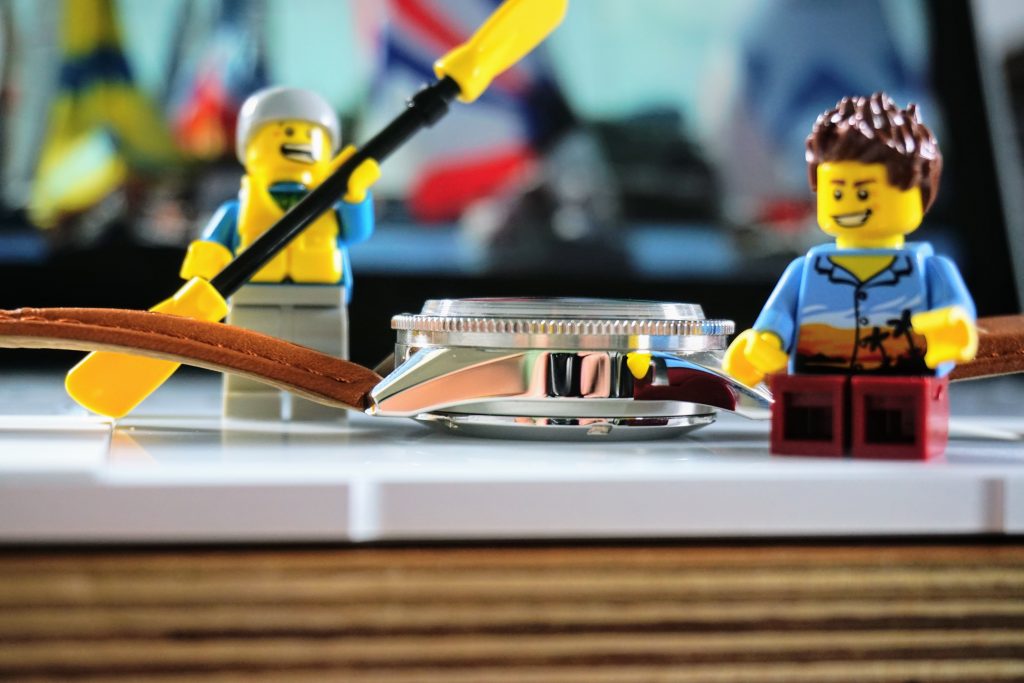
The Case:
The most striking proportional detail of the Yachtingraf’s polished steel case is the diameter-to-height ratio. I’m going to throw “D2H” out there as a new way to gauge the height-width proportions of a watch. For the Yema Yachtingraf, it’s 39 mm wide (same as the vintage model) by 15.35 mm tall (vintage was 14 mm), meaning it has a D2H of 2.54mm and looks like a damn cupcake from the side. It’s seriously tall for its diameter. Very tall. From the side, it’s tallness is also accentuated by what looks to be a six-layer sandwich, from the caseback to the three-layered polishing on the midcase, to the bezel and the sapphire.
On the wrist, the tallness shrinks somewhat, but it’s still a tall watch. It’s not too tall, like it’s not hitting me in the face when I drink coffee. But I would’ve loved it to be in the 12 mm range. For comparison, I have the Oris Divers Sixty-Five, and at 40 mm by 13 mm (D2H = 3.08), that thing feels downright dainty compared to the Yema Yachtingraf.

The Yema’s tall case also makes the lugs look incredibly short. They don’t look bad, but they kind of accentuate the tallness of the case. Tip to tip, the lugs measure about 45.5 mm and looking top down shows the best side of the Yachtingraf: it looks true to it’s 60’s heritage, and it all, finally, works well together.

Moving around the case, the crown is a good size, unsigned with deep grooves for easy operation…theoretically. It’s not screw-down, but it’s “double seal ‘O’ ring” gives it a 100 meter water resistance. Unfortunately, the large crown guards make the Yema Yachtingraf extremely difficult to grasp, which makes winding and setting a fingernail-breaking chore. Yeah, I know you’re supposed to take a watch off to wind or set, but this design makes it impossible to do either while it’s on your wrist (and nearly impossible to do off the wrist). On the bright side, the chrono pushers are solid, well placed, and have a pleasingly loud and crunchy click when pressed.
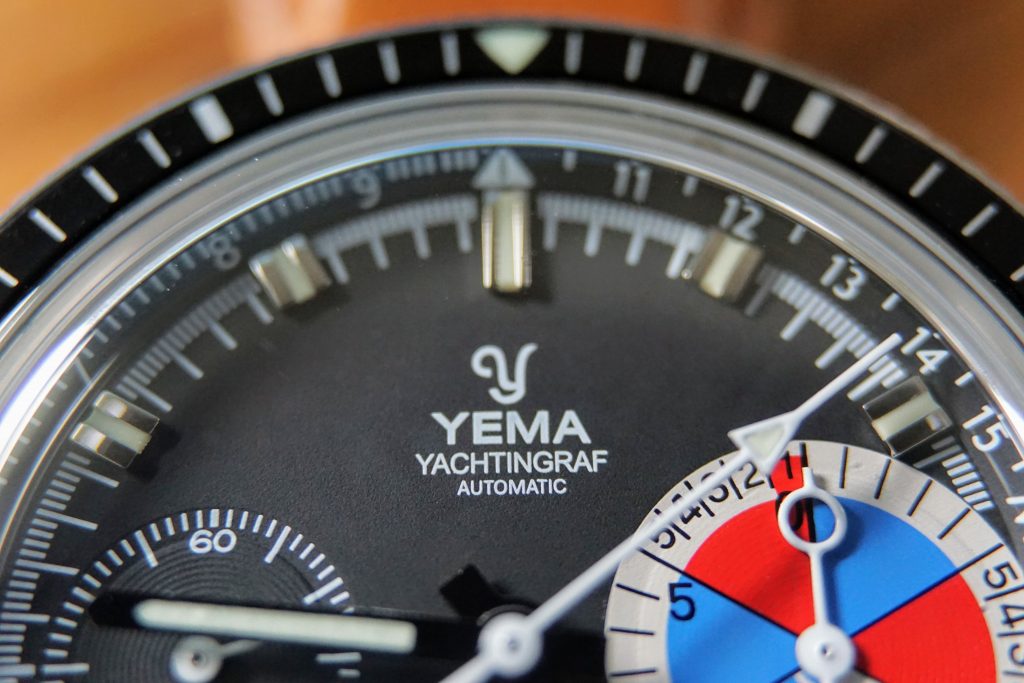
The Dial:
The dial details (what you immediately see) defined my first impressions both good and bad. The Yema Yachtingraf is colorful for sure and the three subdials seem to all be different diameters (although I think only one is larger), but it works. There are blue and red stripes with pie slices and crosses all on a matte black background. It all seems to work with a great nautical flair. For the logo, Yema chose to use their vintage curvy Y instead of their current angular version, keeping with the retro vibe.
The black hour and minute hands get a bit lost on the black dial, but the strip of lume saves their legibility (albeit just slightly). I’ve had to strain in low light to see them, especially if they’re overlapping one of the white subdials. The sweeping chronograph seconds hand uses the main dial and it’s an awesome – thin white stick that reaches the edge of the dial. It incorporates a sharp, lume-filled triangle that’s far enough from the tip to add even more visual flair.
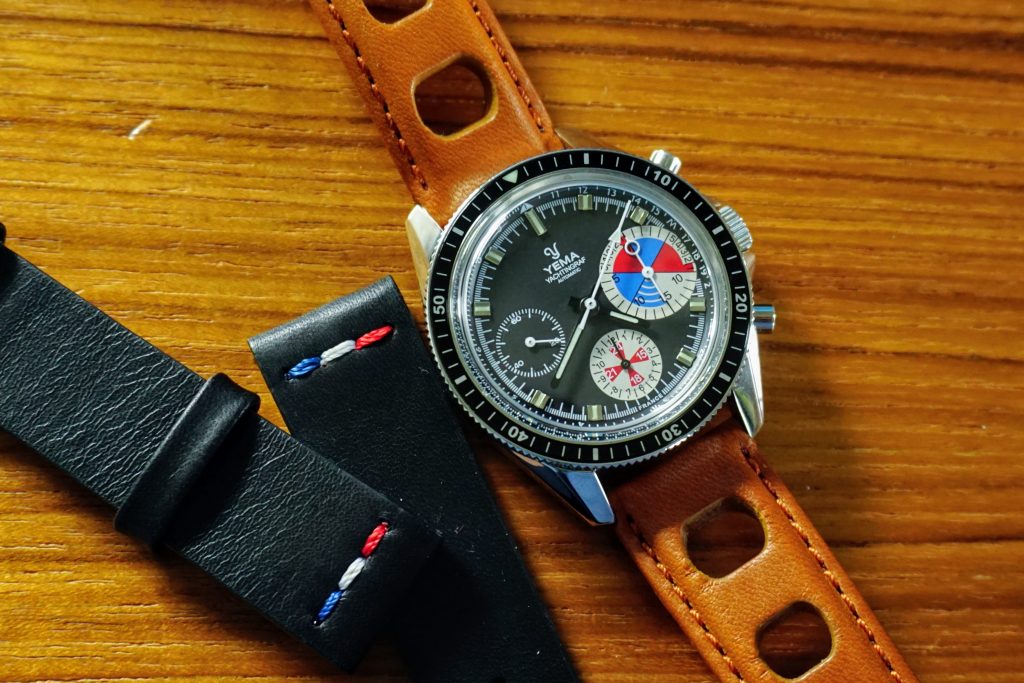
Going counterclockwise, at 9 o’clock lies the running seconds subdial with simple white markings on the black background. It’s tiny but it works. At 6 o’clock is a white 12-/24-hour chrono counter with a neat red cross pattern to differentiate the 0-12 and 12-24 scales. At 3 there’s the very large chrono jumping minutes subdial that really gives the Yema Yachtingraf its personality.
In yachting (AKA sailboat racing) the judge sounds a horn 10 minutes before the start of a race. Since sailboats can’t all just line up at the starting line, it’s a running start, meaning all boats are moving. It takes some strategy and good timing to hit the starting line just after the actual race starts otherwise your boat has to turn around and start again. So when sailors hear the 10 minute horn, they click their regatta timers for the countdown to the start. On the Yema Yachtingraf Heritage, this colorful subdial and it’s double-tipped hand counts from 0 to 10 in one direction (from 12 o’clock) or from 15 to 0 (from 6 o’clock). One tip is straight while the other has an open circle on it to help you differentiate.
In vintage fashion, the 60-minute bezel is super-thin and draws the eye to the dial. It appears to be aluminum or another type metal, with a single lume pip at zero. But it’s bi-directional and does not click. I’ve never had nor heard of a watch where the bezel didn’t click and it took me off guard when I first gave it a spin. It’s tight and I can’t imagine it ever moving around on its own or even from slight bumps. But if I were crashing through the waves on a yacht race around the world, I’d probably not rely on it to stay put. Of course, for my typical needs (timing veggies in the oven) it works just fine.
View this post on Instagram
Here’s the most disappointing part of the Yema Yachtingraf Heritage: the inner bezel markings. Beginning at 12 o’clock the markings seem to start with 10, going through 15 near (but not at) 3 o’clock. Then it shows an “M” where 16 should be, then on to a 3 near 6 o’clock, then a pi symbol, then 4 through 9 as it rounds back to 12 o’clock. The indicators change spacing along the way, and I couldn’t wait to dive into the instruction booklet to discover what they measured. But they weren’t mentioned, which forced me back to Yema’s online chat. Their explanation, and I quote, was that the markings are “mainly for aesthetic purpose. It makes the watch looks more complicated and thus makes it more eye catching too.”
Well that’s damn lame. Especially for a watch totally reliant on ”Heritage.” I’ll have to admit, that explanation made me feel stupid, but buyer beware, right? (Note that vintage Yachtingraf models from the 60’s do not have inner bezel markings, so not sure why they felt the need to add them.)
The Movement:
Although most current Yema models have quartz movements, each line seems to have a Heritage automatic model packing an ETA movement. For the Yachtingraf, it’s the ETA Valjoux 7753. It hacks and the chrono flies back nicely, and it beats at 28,800 bph. It’s the same movement used by Hamilton, Tissot, Longines, Victorinox, and others, but the Yema Yachtingraf is at the top end of this movement’s price spectrum.
If you’ve read about this workhorse chrono movement, you’ve come across mentions of its noise. Let me tell you, this thing is noisy. Like LOL loud. One of the first times I set it down on my desk, it sounded like that big rock chasing Indiana Jones in that cave. OK, it wasn’t that loud, but it was loud enough to shock me. I never hear it when it’s on my wrist, but set it down in just the right way and it’s loud.
Sound notwithstanding, it’s a solid, proven movement. My only nit would be that the chrono seconds hand is about a quarter-second off of alignment with 12 o’clock.
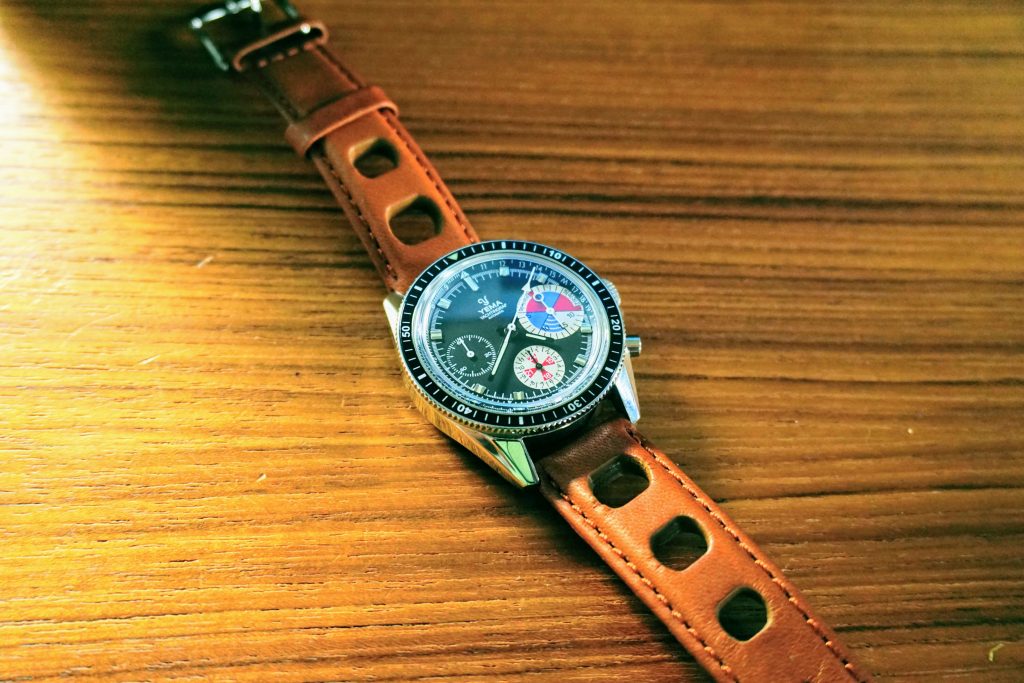
The Straps:
Yema has been offering an additional free leather strap for months, so the Yema Yachtingraf comes with two. The standard is a nice, light brown leather with three large cutouts on each side and double keepers. It’s a cool, retro look – nicely padded and feels (and smells!) very nice. My 7.9” wrist hits the third hole, so there’s room to grown. The stainless clasp is polished and is signed with a curvy “Y”.
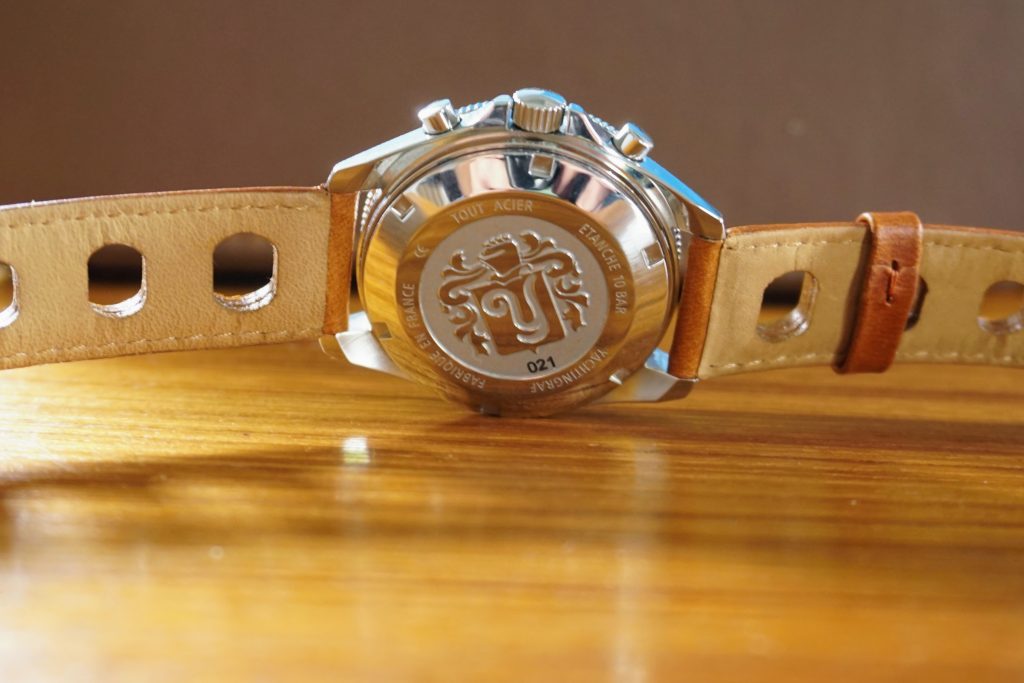
For the second strap, I talked the online chat dude into giving me the navy blue leather “France Flag” version, which has blue, white, and red stitching accents at the top. I have yet to put it on the watch, but it feels high-quality. Although I’d call it black as opposed to navy blue.
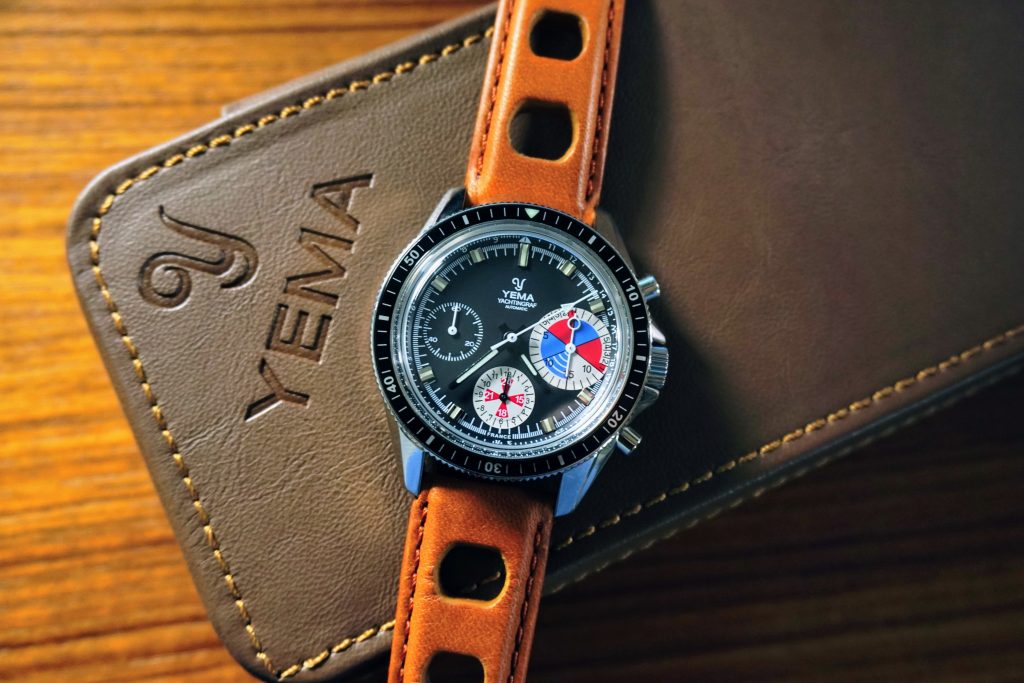
The Verdict:
I’ve been pulled pretty deep into the watch world over the past year or so. And if you’re like me, you’re bound to have a catch-and-release every so often. This feels like one of those. It’s a great looking watch, minus the tallness, and the colors and retro vibe really sing to me. But something about it just doesn’t feel right. I’ve had other pieces where I didn’t initially like them but they grew on me, so I’ll give it another month or so. But right now, I’m not so sure it’s a keeper.
Pros:
-
- Awesome retro styling, nearly identical to the vintage models.
- Great colorway with a very unique dial.
- It’s French, or rather, not Swiss, and that’s somewhat novel.
- Nice straps.
Cons
-
- Case is very tall.
- Tight crown guards make it tough to work crown.
- Inner bezel markings added just for show.
- Non-clicking, bi-directional bezel.
- Noisy movement rotor.
- Automatics are expensive.
Would I buy it again? Probably not, but would instead buy one of their cheaper (and similar) quartz models. Check out all the Yema Yatchingraf models here – cool to see what’s available across the price spectrum.

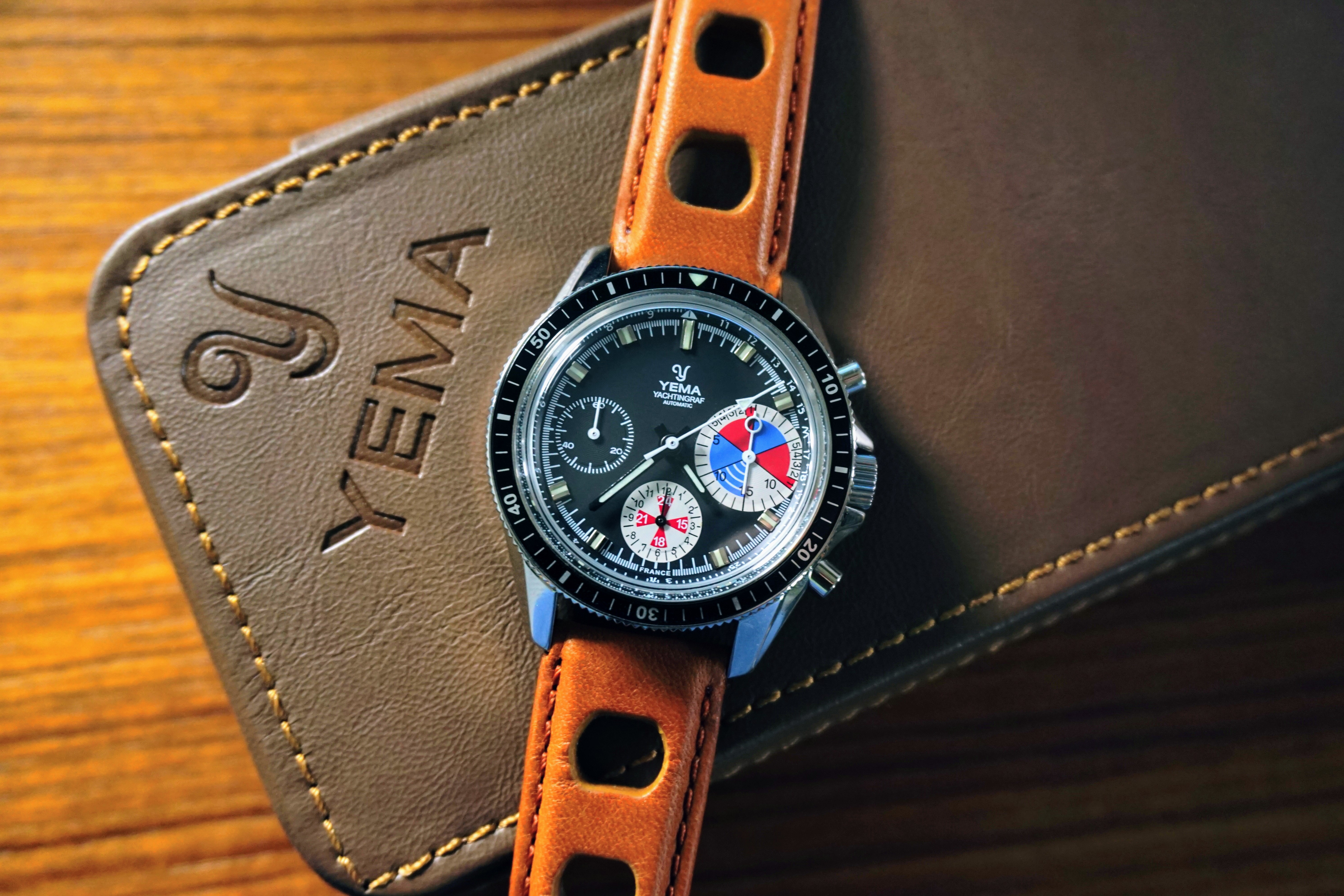
Very nice review.
I can’t be the only person who wishes all watch reviews stated the wrist size of the reviewer next to their byline. I’m having a hard time remembering them all!
– Calamitus (6.75″)
Great review. I always wondered why we don’t see more of these. Now I know why.
Thanks @Calamitus and @Greg! Glad you liked the review. 🙂
On wrist size, @Calamitus, yeah, that’s a good point. I know my wrist is on the large size, but it’s also funny for me to see photos where a 40mm watch covers a reviewers entire wrist width. On the other hand, when I wear something smaller than 38mm, it feels like a bracelet instead of a watch…
@Greg, not sure why there aren’t any reviews of the Yema Yachtingrafs out there, but that’s what prompted me to write this one. It’s always helpful to me to read multiple reviews before I consider a piece, so part of my frustration was in buying this one fairly blind. Hope this helps some others make a choice either way.
Nice review. I have an old Yema FR029 that I love, and recently bought a Yema Spacegraf GMT. When it arrived, I was disappointed in how diminutive it looked on wrist in comparision to the site’s photos. Anyhow, after swapping on a Perlon strap, I’ve come to like wearing the watch. The long, vampire fang lugs have grown on me. I’m tempted to get a Superman for the name alone. 🙂 If only the diameter of the case grew by a few millimeters.
Interesting point about the height. Yema website says the Yachtingraf Heritage is 1.35mm taller than the Superman Heritage (15.35mm vs 14mm). They look like they’re using the same case though.
I was also concerned about the height of the Superman, as it’s already taller than a Seiko SKX.
Have you tried on the Superman Heritage by any chance?
Thanks and great review!
JIN
Hey @JIN – no, I didn’t try the Superman. I love the look of that piece, too, but just don’t think these live up to the price tag.
Hi Jason, the inner bezel markings are for a type of slide-rule. I don’t know exactly how it works but I believe “M” stands for moyenne, which is French for average. I guess the slide rule allowed for the calculation of average speed? It has been copied from the vintage Yema FlyGraf. It is supposed to have a corresponding outer bezel – which they haven’t included on the new heritage models… Google some images of vintage flygrafs and you will see what I mean.
Cheers,
Tim
Sorry for the repeat post. I didn’t think the first one worked 🙂
The inner bezel markings are one half of a slide rule. It has been copied from a vintage Flygraf model. They haven’t put the correct corresponding bezel insert on the rotating part to actually be able to use it though…
Hey @Tim, thanks for the comment. I thought the markings were functional as well, but as I said in the review, I emailed them and their answer was basically that they’re just there for show. Disappointing, and I really wanted them to mean something, but I guess not. 🙁